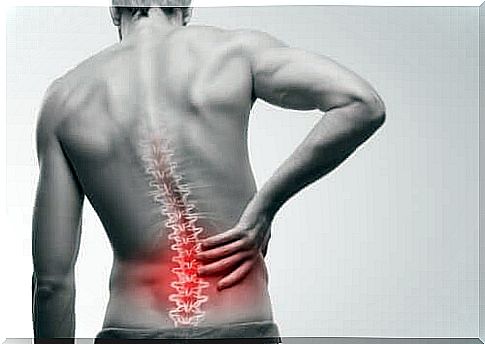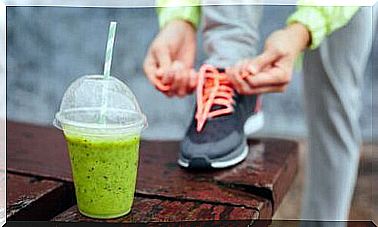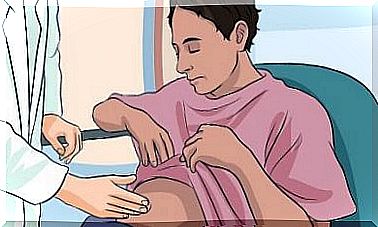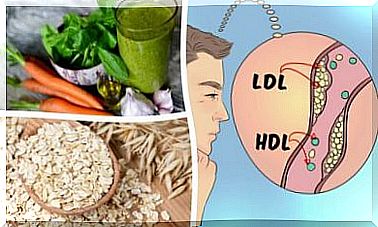Ankylosing Spondylitis (ankylosing Spondylitis): Diagnosis And Treatment
Most people with ankylosing spondylitis have the HLA-B27 gene. But that doesn’t mean that genetically predisposed people have to develop this disease.

Ankylosing spondylitis is a chronic inflammatory disease that manifests itself particularly in the joints of the spine. Ossification restricts the range of motion because the spine is less flexible. For this reason, it often happens that those affected have a hunched back and lean forward.
The exact causes of this disease have not yet been adequately researched, but it is known that the genetic component plays a very important role. Most of those affected have the HLA-B27 gene. However, not everyone who has this gene will develop ankylosing spondylitis.
Ankylosing spondylitis: symptoms

This inflammatory rheumatic disease takes place in phases. Although the spine is usually affected, the inflammation can also occur in various other joints (for example, the shoulders, hips, knees or ankles).
The first symptoms of akylosan spondylitis, also known as ankylosing spondylitis, include pain and stiffness in the lower back at night. These complaints also tend to occur in the morning and after long periods of inactivity. In addition, pain in the neck area and tiredness are common.
The joint between the spine, pelvis and hip is often affected. However, other points where ligaments and tendons connect to the bones (especially on the spine) can cause discomfort.
In spondylitis there is ossification because the organism tries to heal itself. But these bony appendages close the space between the vertebrae and thus two vertebrae can partially grow together.
The result is stiffness. This can also affect the rib cage, which causes lung capacity and function to decrease.
What are the complications of ankylosing spondylitis?
Ankylosing spondylitis can lead to the following complications:
- Inflammation of the skin of the eye (uveitis): It is a very common complication of spondylitis. This can lead to pain in the eyes, which occurs quickly. Sensitivity to light or blurred vision are also common consequences.
- Damage to the heart valves: This disease can cause problems in the aorta. If there is inflammation, the aortic valve in the heart can become deformed, which affects its ability to function properly.
How is ankylosing spondylitis diagnosed?
The diagnostic criteria for ankylosing spondylitis include:
- Clinical Criteria: Lower back pain for more than three months that is relieved with movement and exercise, but is present at rest. In addition, the thorax excursion (visible movements of the chest) is limited. The mobility of the spine is also restricted.
- Radiological criteria: Inflammation of the sacroiliac joint can be seen on an X-ray.
Depending on the criteria present, the diagnosis is:
- A ankylosing spondylitis occurs when a clinical and radiological criteria is met.
- A probable akylosan spondylitis is present if 3 clinical criteria or a radiological criterion are present.
An analysis of the blood and urine can help diagnose if the antigen HLA-B27 is present in the blood. It can also be used to determine the intensity of the inflammatory process.
How is ankylosing spondylitis treated?

Treatment of spondylitis is carried out through the combination of various drugs and rehabilitation.
- Non-Steroidal Anti-Inflammatory Drugs (NSAIDs): This pharmacological treatment can reduce pain and inflammation in the joints. This improves the patient’s quality of life. In addition, he can find better rest during sleep, as he has fewer complaints.
- Basic medication that acts on the immune system.
- Biological medicines that do not cure the disease but help many patients relieve symptoms.
- Rehabilitation must be continuous and combined with drug treatment. Physical exercises and breathing techniques improve the mobility of the spine and strengthen the muscles.
- Surgery: In some cases, surgery is necessary, especially if the joints are severely damaged and mobility is limited.
The combination of different therapies allows patients to overcome the stiffness and stagnation. In addition, other disorders of the musculature and the musculoskeletal system can be prevented. In addition, it is important to do specific exercises or sports to strengthen your back (for example, swimming).









